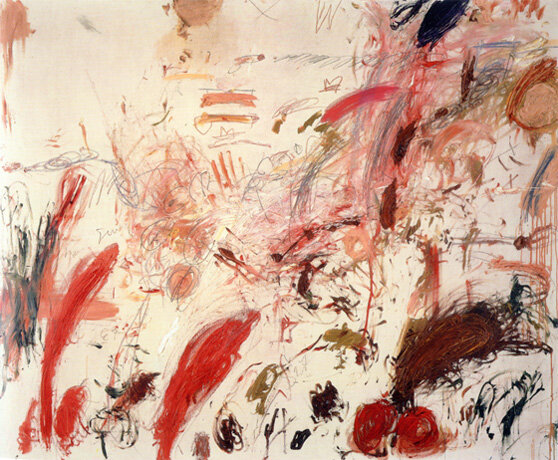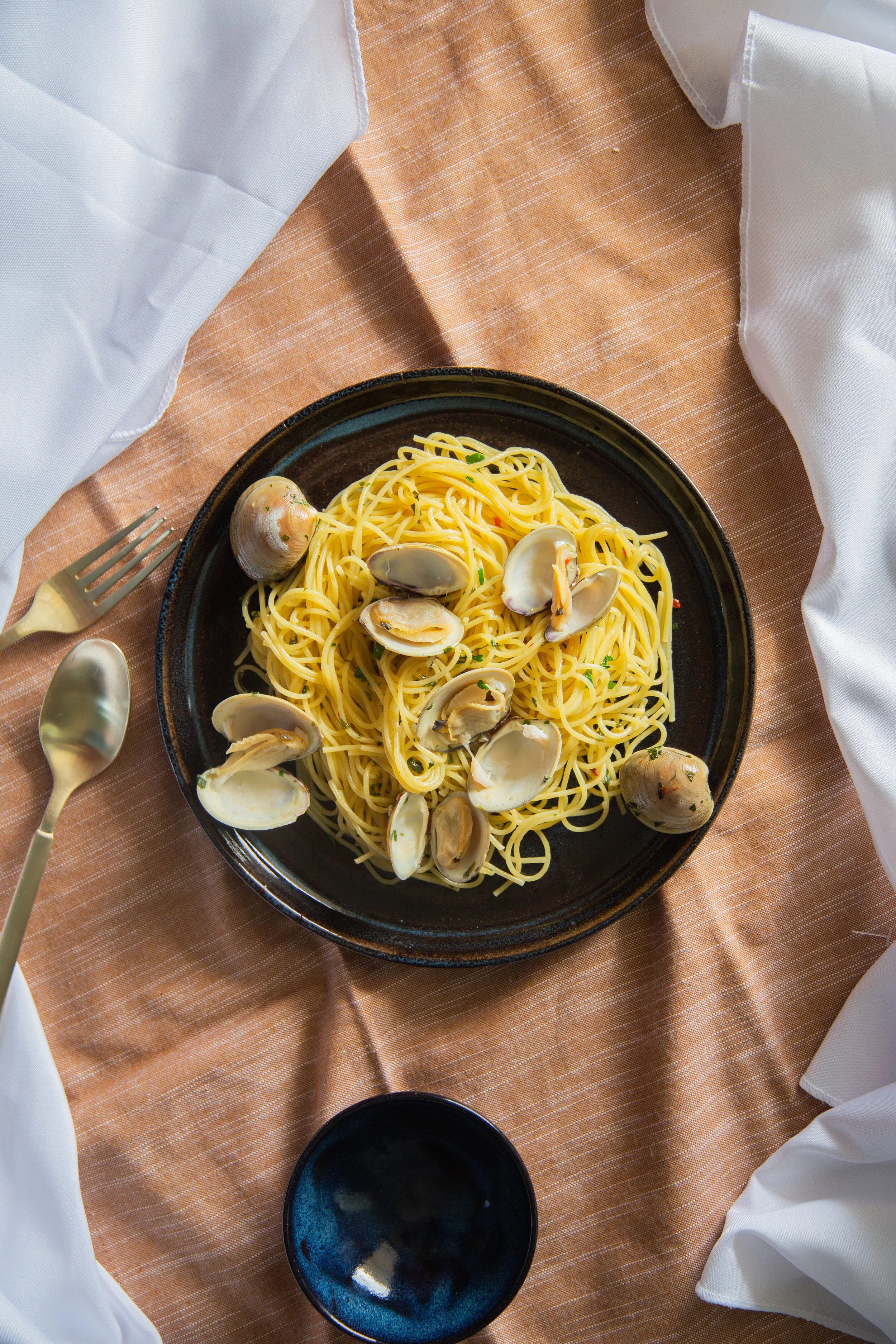Cy Twombly & Italy: The Modern Artist's Muse
There’s one artist always makes me feel alive when I see their work… and that’s Cy Twombly. Wild, scribbled, childlike, untamed… Twombly’s art is explosive, disorderly and joyful all at once. It’s hard to put into words how much his work has impacted me, but from my the formative years of art appreciation to this very day - my heart rings out loud for his masterpieces. Truth be told, there’s no artist more important to my own understanding of the visual arts than Cy Twombly.
Italy has always been known for its artists. It was a magnet for the dreamers, the scientists, the philosophers and the makers during the Renaissance… and even since, the country has spewed out as many masters of their craft as one could ever imagine! Michelangelo, Caravaggio, Raphael, Modigliani…
Cy Twombly (on paper) is about as least Italian as they come. So, how did Cy go from a young Virginian art student to a near native in bella Italia? What drew him in? And how did it become his forever muse? I took it upon myself to find out!
Horst P. Horst for Vogue, 1966
Italy: A Muse
Horst P. Horst for Vogue, 1966
Cy Twombly was born in the rolling hills of Virginia’s Shenandoah Valley on April 25th, 1923. His father, a major league baseball pitcher, named him after the legendary National Baseball Hall of Fame pitcher Cy Young. That said, Cy never grew into the baseball legacy that was built for him. He was a sensitive soul, who showed great promise in the artistic fields from an early age. He grew up near Civil War battlefields, and he mentions how his early surroundings greatly inspired him in his early teenage artistry.
Cy began his art career at the avant-garde Black Mountain College, after working independently in his studio for years. His schooling influenced his motivation to learn abstract expressionism, and to gain the understanding of painting beyond the modern “norm.”
In 1952, Twombly’s feet first landed in his second homeland… Italy. Together with his friend Robert Rauschenberg, he took a six month journey to Italy and North Africa. These adventures forever changed Cy, both as a person and as an artist. Through absorbing the lush Mediterranean culture, learning about mythology and savoring the poetry found within the ancient history… Twombly made many artistic breakthroughs. Many art historians note that on his return from this monumental trip, his work became more graffiti-like, with new methodologies and techniques that challenged all viewers’ ideas of what painting really was.
In 1958, Twombly officially moved to Italy and worked there for most of his life. Rome became his “home,” as did other villages he dwelled in throughout the country, including Gaeta, Bassano, Grottaferrata, Sperlonga and more. To grasp Twombly’s artistic inspiration is to know its direct relationship with Italy’s Mediterranean landscape and fascinating history.
Twombly Meets Rome
When making the connection that my favorite artist had an intimate connection with one of my favorite places in the world (Rome)… I knew I wanted to dig deeper. What did that formative trip to Rome look like? How did it change his mindset and technique? Where did they go? These are the questions that keep me up at night, dreaming about recreating those experiences when I return to Rome one day. To see these sights with new eyes and a fresh perspective of how influential they were to a great artist.
Sosos, "Unswept Room"
It’s said that Twombly once said, “When I grow up I'll go to Rome." In 1952, he made the first step to making this dream a reality. Twombly stayed six weeks in Rome, living in a pensione "overlooking the Piazza di Spagna a block from via Margutta where most of the important contemporary painters and sculptors [had] studios."
Second Voyage to Italy (Second Version), 1962 | Estate of Cy Twombly; photo: Ian Reeves
For days, he’d walk through the ancient city, collecting materials, inspiration and experiencing true la vita bella. Apparently, Cy had a tendency to buy marble busts and old relics at flea markets far too often!
But it was during his time at the Vatican Museum, when Twombly discovered the Sosos mosaic (also known as the "unswept room”) that left a major impact on his artistic sensibilities. He wrote "one must desire the ultimate essence even if it is like the pea pod, contaminated.” The piece represented a major aesthetic of Twombly’s - a collection of history, poems, debris and remaining thoughts and notions otherwise overlooked.
Flash forward to February 1957, when Twombly returned to Rome with the insistence of Italian painter Toti Scialoja to continue his work there. For two months, Cy painted in the village of Grottaferrata, establishing himself as a new artist in the Rome art world at the time, before moving into the city proper. His place this time had a glorious view of the Coliseum, and hosted other visiting artists like Willem de Kooning.
Although for years Twombly did not make a huge splash in the art world in Rome… that would change after his marriage to Luisa Tatiana Franchetti (a well to-do woman). Together they bought a 17th-century palazzo near Piazza Farnese on via Monserrato, where they lived and Twombly worked. It was during this time that his work appeared at the Galleria La Tartaruga. By 1966, Twombly was creating some of his best work - “the blackboard paintings” - that were inspired from his long walks in the city.
Cy Twombly, Quattro Stagioni (Four Seasons) series (1993-95) | Photo via Tate
Horst P. Horst for Vogue, 1966
Beyond Rome
Twombly came and went from Rome for the following 40 years of his life, but in his later years he resided in Gaeta, in southern Italy. Nicola Del Roscio (who went on to become his longtime assistant, archivist and companion) is said to have introduced him to the picturesque Italian village… which was his hometown. In the 1990’s, Cy bought a “centuries old” home in the lush and quiet town, where he “lived the poetry of his work.”
His later work flourished, inspired by the breathtaking 18th century frescoes, Warhol’s old furniture, handmade tiles and a sweeping view of the six acre gardens overlooking the Tyrrhenian Sea. The home itself was a masterpiece of age, filled with relics of days gone by, a collection that inspired Twombly greatly.
Until his death in 2011, Twombly split his life between Italy and Virginia. His legacy is forever tied with the country that inspired his greatest work.
Cy Twombly, Ferragosto (1961). | Photo: Thomas Ammann Fine Art, Zurich.
Is there an artist you feel an instantaneous connection to? Who are they?
Have you ever been compelled to visit the places they’ve been inspired by?
















